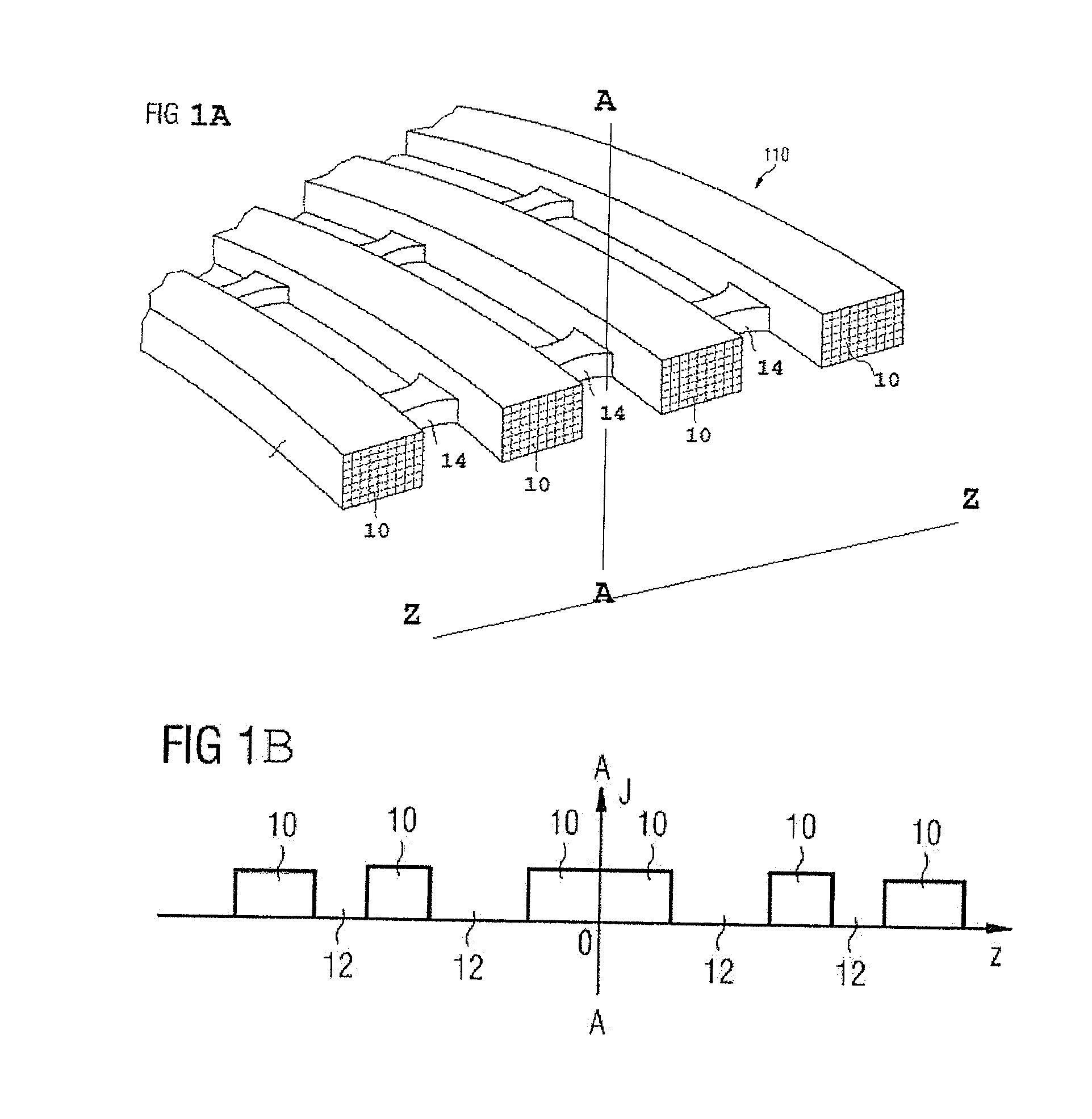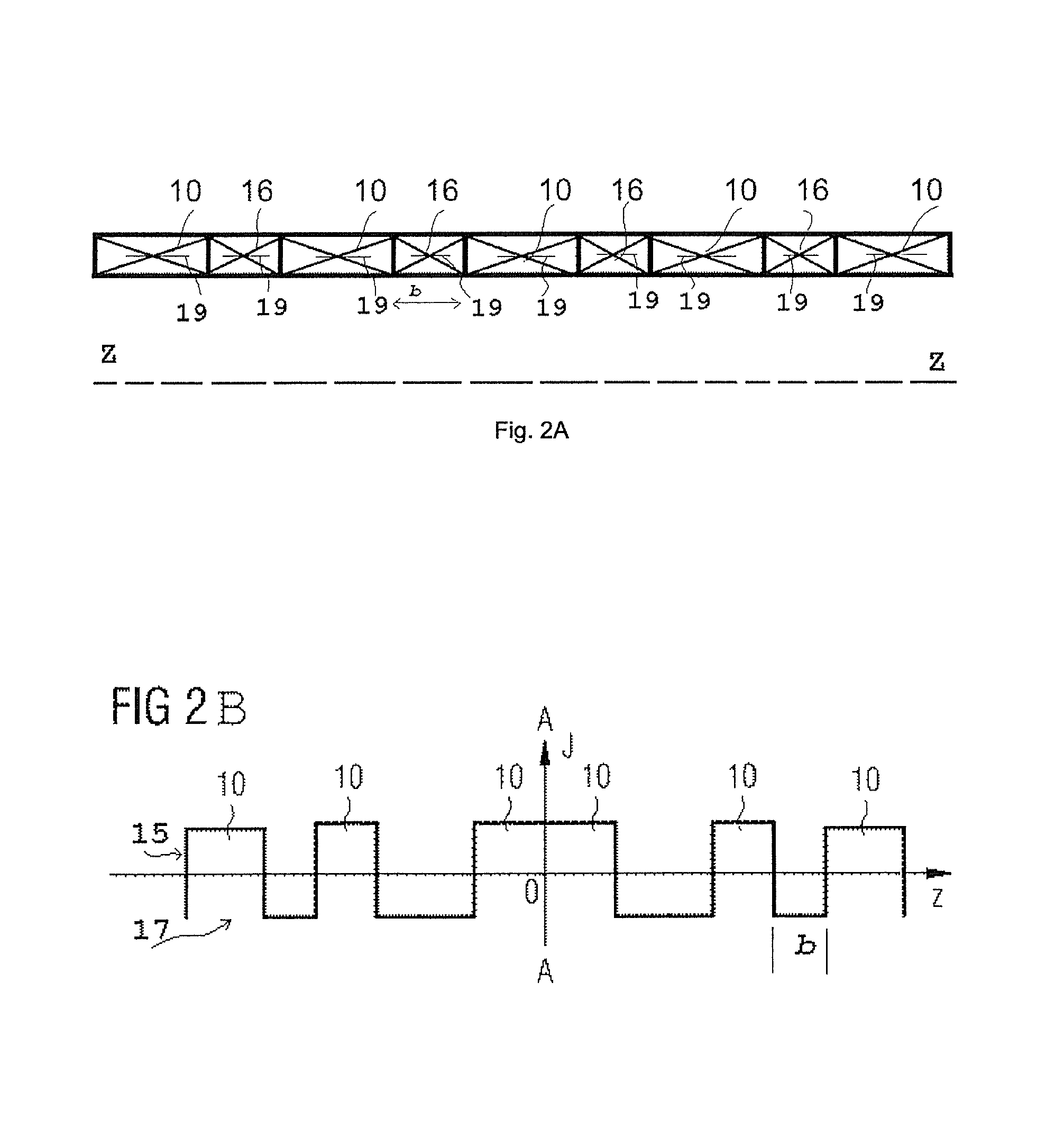Cylindrical superconducting magnet
a superconducting magnet and cylindrical technology, applied in the direction of superconducting magnets/coils, measurement devices, instruments, etc., can solve the problems of spreading the dissipation of stored energy, single parts of the coil assembly becoming so hot that they are damaged, etc., to avoid or reduce the generation of thermal stress, remove or reduce the thermal mismatch
- Summary
- Abstract
- Description
- Claims
- Application Information
AI Technical Summary
Benefits of technology
Problems solved by technology
Method used
Image
Examples
Embodiment Construction
[0020]According to the present invention, the discrete, circumferentially-spaced spacers 14 of known coil structures of FIG. 1A described above are replaced by turns of wire, typically impregnated with resin, and having very similar thermal properties to those of the magnet coils 10. These turns of wire make up coils which are bonded axially between superconducting coils of the magnet structure. For ease of reference in the following description, these turns of wire will be referred to as “spacer coils”, and the magnet coils 10 will be referred to as “main coils”.
[0021]FIG. 2A illustrates an axial half-cross-section of a monolithic superconducting magnet structure according to an embodiment of the present invention. Five main coils 10 are represented. Between the main coils 10 are spacer coils 16. The illustration in FIG. 2A is schematic only. Spacer coils 16 would be expected to have a smaller axial dimension b than the main coils 10.
[0022]Preferably, the spacer coils 16 have inner...
PUM
| Property | Measurement | Unit |
|---|---|---|
| magnetic field | aaaaa | aaaaa |
| superconducting | aaaaa | aaaaa |
| current density | aaaaa | aaaaa |
Abstract
Description
Claims
Application Information
 Login to View More
Login to View More - R&D
- Intellectual Property
- Life Sciences
- Materials
- Tech Scout
- Unparalleled Data Quality
- Higher Quality Content
- 60% Fewer Hallucinations
Browse by: Latest US Patents, China's latest patents, Technical Efficacy Thesaurus, Application Domain, Technology Topic, Popular Technical Reports.
© 2025 PatSnap. All rights reserved.Legal|Privacy policy|Modern Slavery Act Transparency Statement|Sitemap|About US| Contact US: help@patsnap.com



